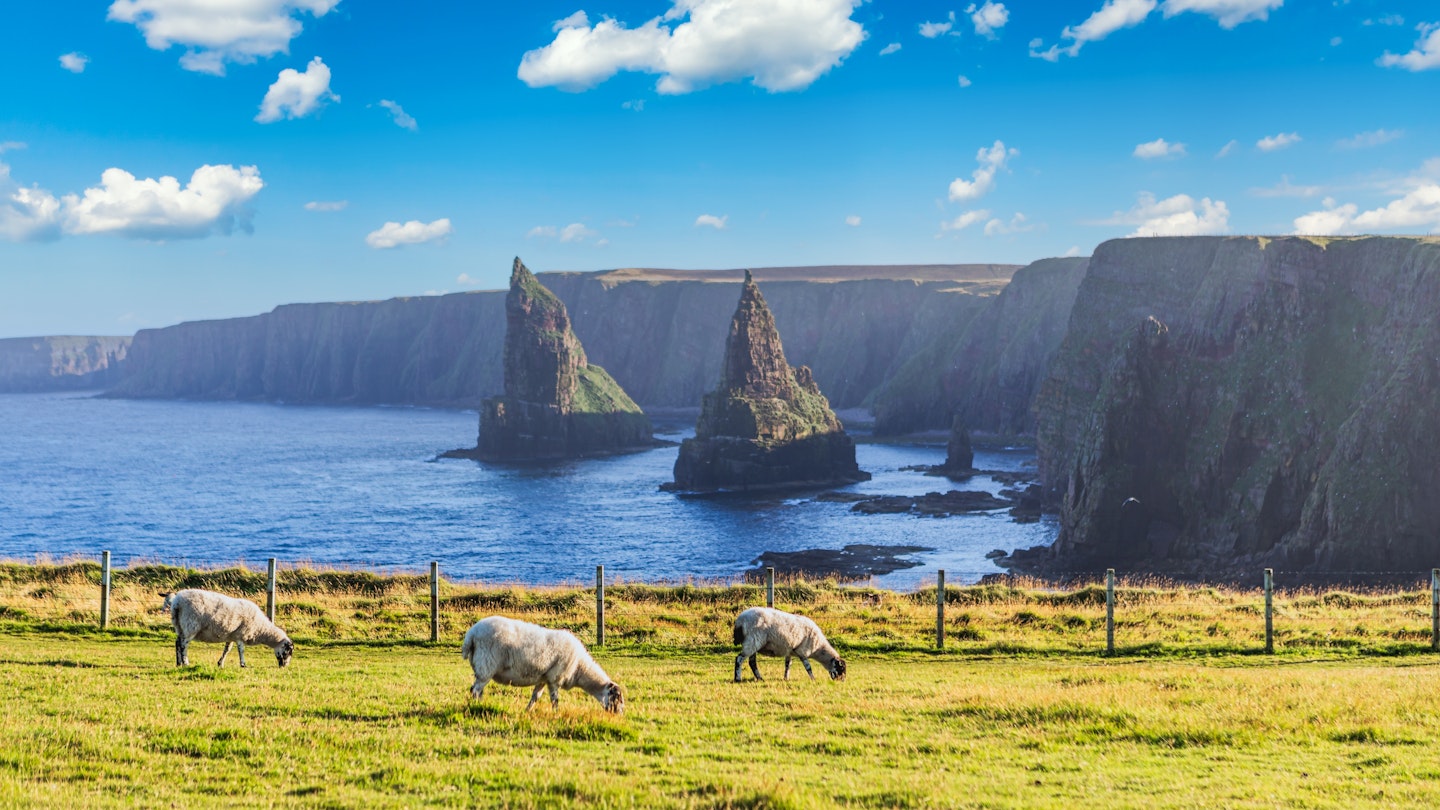Discover the East Coast of Scotland
The east coast north of Inverness is a part of far north Scotland that many visitors whizz past on their journey, eager to press on to the high drama of the west.
However, their loss is significant. While its charms might be less prominent than better-known regions, the east coast is a destination that rewards time and exploration, making it ideal for slow travel. Best of all, you’ll frequently find its tranquil corners all to yourself.
I first visited this beautiful coast on a fleeting trip, but the impression left on me—of vast, shifting skies, charming fishing villages, and stretches of golden sand—was enough to entice a return at a more leisurely pace.
In an area of Scotland often characterized as remote, I was pleasantly surprised to discover that the east coast is well connected by public transport. Buses from Inverness traverse the entire region, and trains are also an option along certain routes.
My journey began in the seaside village of Golspie, just two hours north of Inverness by train. A six-mile walk took me past elegant Dunrobin Castle, an Iron Age broch, and sunbathing seals, finally arriving at Brora, which boasts one of the region’s finest beaches. Subsequently, I hopped on a bus north to Wick, using this old fishing town as a base for leisurely walks along the craggy coastline.

My final stop was John O’Groats. While it can feel like a hub of tourists, it proved to be an excellent launching point for reaching the scenic north coast, which features shell beaches, seabird colonies, and rugged sea stacks surrounding Duncansby.
Traveling this way poses its challenges, primarily due to the limited number of transport services available each day. Nonetheless, with thoughtful planning, you can combine coastal walks with leisurely bus and train rides, allowing you to forge a deeper connection with this captivating landscape.
Step 1: Plan Your Route
Coordinate bus and train schedules with your walking itinerary.
Firstly, it’s crucial to check bus and train timetables to understand public transport options. Buses serve many more of the east coast’s charming villages and towns compared to trains, which often bypass some areas between Helmsdale and Wick.
Next, investigate the John O’Groats Trail: a remarkable 147-mile walking route between Inverness and John O’Groats that closely follows the coast, showcasing sandy beaches, pebble coves, and dramatic cliffs. The trail is broken down into manageable sections, making it easy to plan a walking day between bus stops—just be aware that the quality and difficulty of the path can significantly vary.

Step 2: Decide When to Go
Account for Scotland’s unpredictable weather.
The weather in the Highlands is notoriously changeable. Thus, one can easily begin a day’s hike in pouring rain only to finish it under a bright sun. Spring and fall are generally regarded as the best times to visit, although midsummer is enchanting due to long daylight hours, resulting in lingering twilight.
Step 3: Review Timetables
Ensure your transport plans are feasible.
Once you have a plan, reassess the timetables to ensure your itinerary is achievable; Sundays, for example, can often be ideal for walking or resting days. Not requiring advance bookings for transit provides a bit of on-the-ground flexibility—but be mindful of when the next service departs to avoid being stranded.

Step 4: Allocate Ample Time
This is slow travel, after all.
While it might be tempting to cover a lot in one trip, being overly ambitious can lead to disappointment when trying to squeeze in additional stops. I made sure to allow extra time to climb Ben Bhraggie in Golspie, snorkel in Brora, and spot puffins at Duncansby, yet I wished for even more time to explore all the hidden gems suggested by fellow travelers.
Step 5: Pack Smartly
Include layers and snacks in your packing list.
Be prepared with sturdy walking shoes, a lightweight waterproof jacket, and multiple layers to tackle the variable Highland weather. Dining options may be limited, so consider packing a takeaway lunch at the start of your day and stocking up on snacks whenever you find a supermarket.
The coast also provides fantastic wildlife viewing opportunities, including orcas, whales, and dolphins in the waters, along with nesting puffins and other seabirds in summer—bringing binoculars or a telephoto lens is highly recommended. Thankfully, the east coast is generally free from the notorious midges that plague other areas.

Final Thoughts
If I could revisit this journey, I would certainly include even more walking. The coast offered a variety that exceeded my expectations, and there’s nothing quite like the feeling of being the only traveler in such expansive landscapes. Another piece of advice would be to allow additional time, as a week is just enough to start uncovering the magic of this region.





